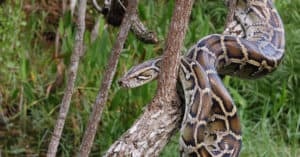Introduction
Snake attacks are a severe clinical emergency that can happen in various settings, especially in regions where snakes are prevalent. In Australia alone, there are countless types of venomous snakes such as the Tiger Serpent, Eastern Brown Serpent, and King Brown Serpent. Comprehending exactly how to properly manage serpent bites is crucial for anyone that hangs out outdoors or lives in backwoods. This short article will certainly check out detailed first aid management strategies for snake bites and outline finest techniques for responding to these incidents.
First Aid Monitoring of Snake Bites: Best Practices for every single Situation
When managing a serpent bite, the preliminary action can significantly impact the dwarf crowned snake target's end result. Immediate action is essential because swift medical treatment typically identifies the degree of injury or survival price. Here are necessary emergency treatment concepts to remember:
Stay Calm: The primary step in handling a serpent bite is to continue to be tranquil. Panic can boost heart prices and boost the spread of venom throughout the body. Call for Help: Dial emergency situation services instantly. Give them with your place and any details regarding the snake if possible. Keep the Sufferer Still: Motivate the victim to remain as still as feasible. Activity can enhance blood circulation, increasing poison absorption into the bloodstream. Positioning: If viable, position the damaged arm or leg at or listed below heart degree. This positioning helps decrease venom spread. Remove Tight Clothing: Loosen any kind of clothes or jewelry around the bite site; swelling might take place quickly after a serpent bite. Do Not Use Ice/Cold Packs: Unlike common belief, applying ice can worsen tissue damage and need to be avoided.Understanding Snake Variety and Their Habitats
Tiger Serpents and Their Habitat
Tiger snakes (Notechis scutatus) are among Australia's a lot of notorious venomous snakes as a result of their aggressive nature and potent venom.
- Habitat: They commonly live in coastal areas, marshes, and areas with dense plant life like marshes and swamps. Risks: Understanding of regional tiger serpent habitats can minimize the risk of coming across one unexpectedly.
Eastern Brown Snakes: A Substantial Threat
The Eastern Brown Snake (Pseudonaja textilis) is an additional very poisonous species found throughout eastern Australia.

- Habitat: This snake thrives in urban areas, agricultural lands, and grasslands. Behavior: Understood for its fast strikes when intimidated, recognizing its habits might help reduce encounters.
Recognizing Signs and symptoms of Snake Bites
Identifying signs early on can improve possibilities of reliable therapy:
Local Symptoms:- Pain and swelling around the bite site Discoloration or bruising
- Nausea or vomiting Difficulty breathing Signs of shock (e.g., light skin, fast heartbeat)
First Help Methods for Particular Snake Bites
First Help for Tiger Serpent Bite
In situation of a tiger snake bite:
Stay tranquility; keep still. Call emergency solutions immediately. Immobilize the influenced limb making use of a splint if available. Do not try to suck out venom or use ice.First Help for Eastern Brown Snake Bite
For an eastern brownish snake bite:
Keep calm; guarantee the victim. Call emergency situation services without delay. Position them pleasantly while avoiding movement. Mark the sides of swelling with a pen if possible for observation.Creating Your Serpent Bite First Aid Kit
A well-prepared emergency treatment kit can make all the distinction during emergency situations:
|Thing|Function|| -------------------------------|---------------------------------------------------|| Compression plasters|To incapacitate limbs|| Clean and sterile gauze|To cover injuries|| Antihistamines|For allergies|| Emergency contact numbers|Quick access during crises|| Instruction manual|Detailed support on taking care of emergencies|
What Must You Never Do When Dealing With a Serpent Bite?
Here's a checklist of typical challenges when dealing with serpent attacks:
Do not use tourniquets; they can trigger even more damage than good. Avoid cutting right into or trying to draw out venom from the wound. Never provide alcohol or stimulants to targets as it could worsen their condition.FAQs About Emergency treatment Administration of Snake Bites
1. What should I do if I see a snake?
Stay calmness and retreat gradually without abrupt movements.

2. Exactly how do I determine if a snake is venomous?
Research regional types' attributes; many have distinctive color patterns or markings.
3. Can I use ice on a serpent bite?
No, using ice can boost tissue damage.
4. How much time do I have after being bitten before looking for clinical attention?
Seek medical attention quickly-- time is important with poisonous Nocturnal snakes Australia bites!
5. Is it safe to drive myself to the hospital after a bite?
No! It's dangerous as signs and symptoms might aggravate en course; wait for professional help.
6. Are all serpents in Australia dangerous?
No! While Australia has several unsafe serpents, there are additionally non-venomous species that pose no threat.
Conclusion
The first aid management of serpent attacks needs punctual action integrated with knowledge about local types' behavior and habitats like those of tiger serpents and eastern brown snakes in Australia. By adhering to best methods laid out above-- such as remaining calmness, calling emergency solutions immediately, and recognizing what not to do-- you dramatically boost survival possibilities after such mishaps occur.

Equipping on your own with understanding regarding various sorts of snakes in your area and preparing a suitable first aid set will ensure you prepare should an http://knoxbcer614.raidersfanteamshop.com/your-go-to-guide-for-snake-bite-first-aid-kits encounter emerge-- making you much better prepared to handle this possibly deadly situation effectively!